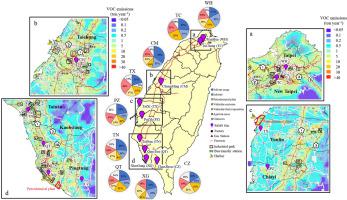当前位置:
X-MOL 学术
›
Atmos. Environ.
›
论文详情
Our official English website, www.x-mol.net, welcomes your
feedback! (Note: you will need to create a separate account there.)
VOC characteristics and sources at nine photochemical assessment monitoring stations in western Taiwan
Atmospheric Environment ( IF 4.2 ) Pub Date : 2020-11-01 , DOI: 10.1016/j.atmosenv.2020.117741 Yu Shan Huang , Chu Chin Hsieh
Atmospheric Environment ( IF 4.2 ) Pub Date : 2020-11-01 , DOI: 10.1016/j.atmosenv.2020.117741 Yu Shan Huang , Chu Chin Hsieh

|
Abstract Using 2017 data, 54 volatile organic compounds (VOCs) in Taiwan's atmospheric environment from nine photochemical assessment monitoring stations (PSMSs) were collected and their characteristics and sources were analyzed. High VOC concentration spots were exposed in urban and industrial areas (Wanhua, Tucheng, Chungming, Tainan, Qiaotou, and Xiaogang). The major categories of VOC were alkanes and aromatics. Among them, benzene, toluene, ethylbenzene, and m,p-xylene (BTEX) predominated and contributed to ozone formation potential (OFP) and secondary organic aerosol formation (SOAF). T/B and X/E ratios showed that VOCs in urban and industrial areas originated from fresh, mixed sources of local emissions. Positive matrix factorization (PMF) analysis indicated that industrial emissions (solvent usage, industry, and petrochemical plant) were the primary contributors, followed secondarily by traffic emissions (vehicular emission and vehicular fuel evaporation), and aged air-mass. Analysis by potential source contribution function (PSCF) was conducted to confirm the effects of aged air-mass sources. The estimated VOC sources OFP and SOAF indicated that industrial emissions were the greatest contributors to OFP and SOAF. Results from this study imply that VOC control measures should prioritize control of industrial emissions.
更新日期:2020-11-01











































 京公网安备 11010802027423号
京公网安备 11010802027423号